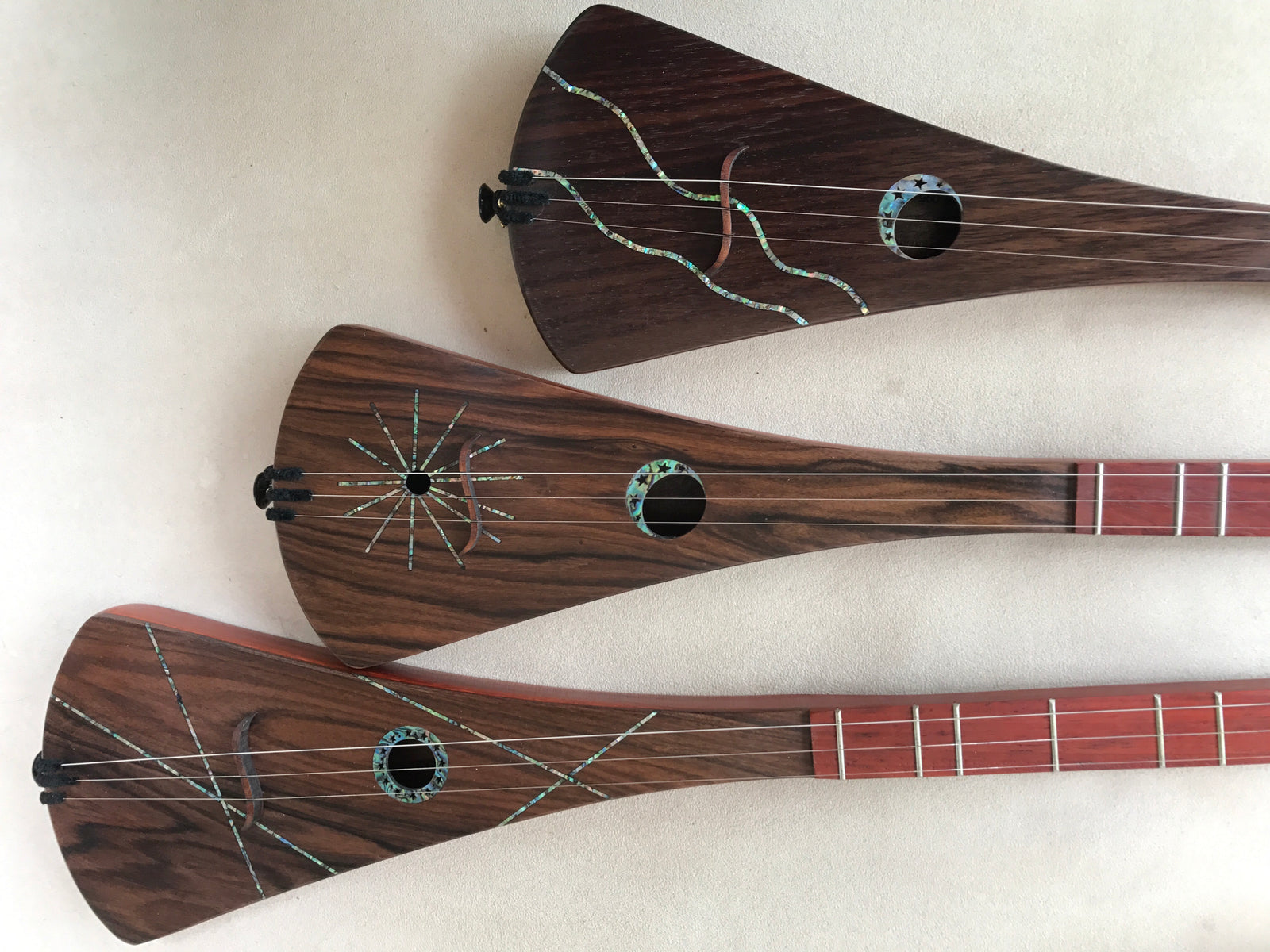
People often ask, what should I do first, how can I learn the Strumstick?
This Strumstick Beginners Guide is the very best, step-by-step way to learn the Strumstick. It is Fun and Frustration Free!
We also have a complete Learning Center with Beginner, Intermediate and Advanced topics
Please do these steps in the order given,
each topic depends on the previous ones.
The practice times are minimum suggestions,
more is good!
First Session: Get Started.
Skill 1. Holding the Strumstick video
Watch this first. This will make everything else a lot easier.
Skill 2. Basic Strumming video
(not fretting any notes)Spend 5 minutes on this, then come back to it after a few other steps.
Skill 3. Fretting Video
Here is how the notes get made. Watch this and then spend 10 minutes wandering around the fretboard (as explained). Gets your fingers used to fretting and you are starting to "learn the neighborhood".
Session Two: Review Session 1, then do this.
Skill 4. Songlets video
This is a great feature of the strumstick, you can start creating on the first day! Be comfortable with Session One first, watch this video, and try it out. and go back and work with them if you have difficulty with this, go back and get comfortable with material in Session One .
Session Three: If comfortable with Session Two, watch this Video, try it out, and try some of the songs in the Strumstick Instruction Book.
Skill 5. Simple Songs video (Playing Songs)
Now we start playing songs that other people wrote! Again, be comfortable with Session One (1,2,3) ; you are doing several things here, strumming, choosing notes on the fingerboard, and also keeping track of which note is next. Play more slowly, you are multitasking.
You can find more Songs Here in the Learning Center
Session Four, Cool Rhythms: Do this any time after Session One
Skill 6. Rhythms: Adding up-strums video
This is a way to start to make strumming more interesting, and spending a bunch of time experimenting with this is very worthwhile. You can play random notes on the first string while you practice this, to keep it interesting.
Session Five: Follows Sessions Three and Four (Simple Songs, Rhythms)
Skill 7. Rhythms in songs video If you are comfortable with step 6, heres how to incorporate more interesting rhythms into songs. Be aware, when you add new things together, it is more challenging. If you have gotten to the point with step 6 where its getting a little boring, you will be less challenged in this step.
Session Six: Beginning Chord Work. Be comfortable with Session Two
Skill 8. Minichords video
Here is our first look at making note harmonies while playing. These sound really great, and are a perfect stepping stone to playing regular chords. More MiniChord material is Here in the Learning Center.
Session Seven: Minichords and Songs
Skill 9. Songs with Minichords
You did work on the MiniChords in session 6 right? Now we are adding MiniChords into songs. Be sure you are comfortable with doing basic Minichords.
Session Eight: Regular Chords
Skill 10. Regular Chords
And now we start learning "regular" chords (not just the moving harmonies of MiniChords. There are lots of chords, but if you start with D, G, A, Bm, Em, F#m, and maybe C, (for the D Strumstick) that will cover a lot of songs. See D Strumstick Most Used Chords
Learn G, C, D, Em, Am, Bm, and F on the G Strumstick. (Most Used G Strumstick Chords here). We'll talk about how to use chords in the next step. See Chordsin the Learning Center for more.
Chords will take time and patience to learn, we are moving towards the bigtime here!
Session Nine: Putting it all together; Chords in Songs
Skill 11. Songs with Chordsvideo
Playing a song using chords is a multitasking situation. Go Slow, use a simple steady beat while strumming, and follow the lyrics to change chords at the appropriate spot. Also See Chords in the Learning Center for more.
Particularly, See D Strumstick Most Used Chords and for G Strumsticks, Most Used G Strumstick Chords here.
Note for G Strumsticks:
This video is played with a D Strumstick. To play with a G Strumstick, you have to translate the chords to key of G (called Transposing). Use this Guide for Key of D to Key of G.
Sales, New Products, Instructions, Videos, and Free Offers, Useful Content.
